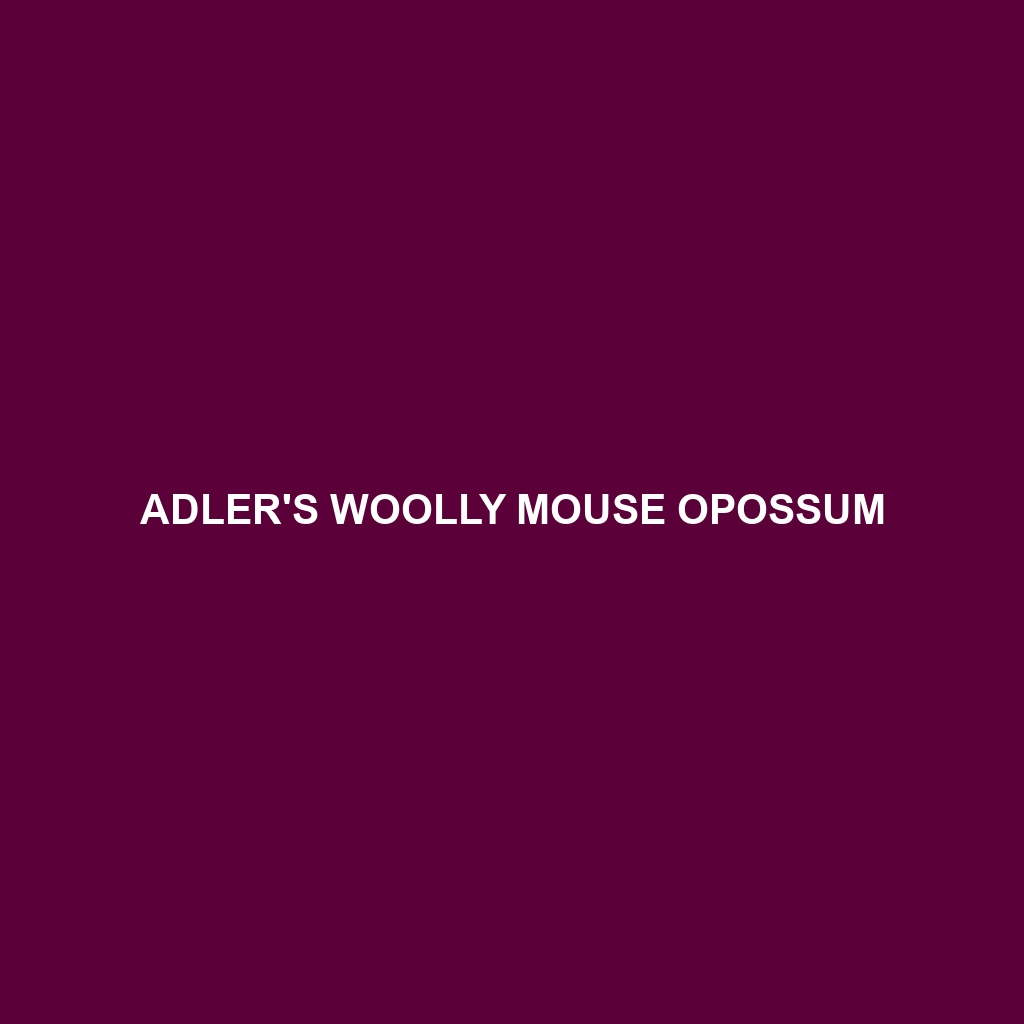Adler’s Woolly Mouse Opossum
Adler’s Woolly Mouse Opossum (Micoureus adleri) is a small, nocturnal marsupial predominantly found in the lush, tropical forests of South America. Known for its soft, woolly fur and agile movements, this elusive creature plays a vital role in its ecosystem. Its unique adaptations and behaviors make it a fascinating subject of study and an important species within its habitat.
Physical Characteristics
Size: Adler’s Woolly Mouse Opossum is relatively small, with adults typically measuring around 15-20 cm (6-8 inches) in body length, excluding the tail, which can add an additional 10-15 cm (4-6 inches).
Coloration: This opossum features a dense, woolly fur coat that varies from grayish to brownish hues, providing excellent camouflage within the forest. The underbelly is usually lighter, ranging from white to pale yellow.
Special Features: One of the key distinguishing features is its prehensile tail, which is partially covered in fur and helps with balance and grip while navigating through trees. Large eyes adapted for nocturnal vision and sensitive whiskers also enhance its night-time foraging capabilities.
Behaviors
Social Interactions: Adler’s Woolly Mouse Opossum is primarily solitary, coming together only for mating purposes. However, they are known to communicate through vocalizations and scent markings.
Feeding Habits: As omnivores, their diet consists of a variety of fruits, insects, small vertebrates, and nectar. This diverse diet helps in seed dispersal and pollination, making them integral to their ecosystem.
Ecological Roles: They serve as both predator and prey within their habitat. By controlling insect populations and participating in seed dispersal, they maintain ecological balance.
Habitats
Preferred Environments: These opossums thrive in tropical and subtropical forests, favoring dense vegetation that offers ample food sources and shelter. They are arboreal, spending most of their time in trees.
Geographical Range: Their range spans across parts of South America, with sightings reported in countries like Brazil, Peru, and Colombia.
Adaptations
Prehensile Tail: This adaptation allows for greater maneuverability and stability while navigating the treetops.
Nocturnal Lifestyle: Large eyes and enhanced senses enable them to forage effectively at night, avoiding many diurnal predators.
Woolly Fur: The dense woolly fur provides insulation against the cool night temperatures of their forest habitat.
Conservation Status
Currently, there is limited data on the exact population trends of Adler’s Woolly Mouse Opossum. However, habitat destruction and deforestation pose significant threats. Conservation efforts aimed at preserving tropical forests are crucial for their continued survival.
Fun Facts
Mating Dance: During the breeding season, males perform a unique “dance” involving tail waving and vocalizations to attract females.
Nesting Habits: Females construct intricate nests from leaves and twigs in tree hollows or dense foliage to rear their young.
Lifespan: In the wild, these opossums typically live for about 2-3 years, though their lifespan can extend up to 5 years in captivity.
Adler’s Woolly Mouse Opossum is a remarkable example of the biodiversity found in tropical forests, and understanding its role in the ecosystem highlights the importance of conservation efforts.
